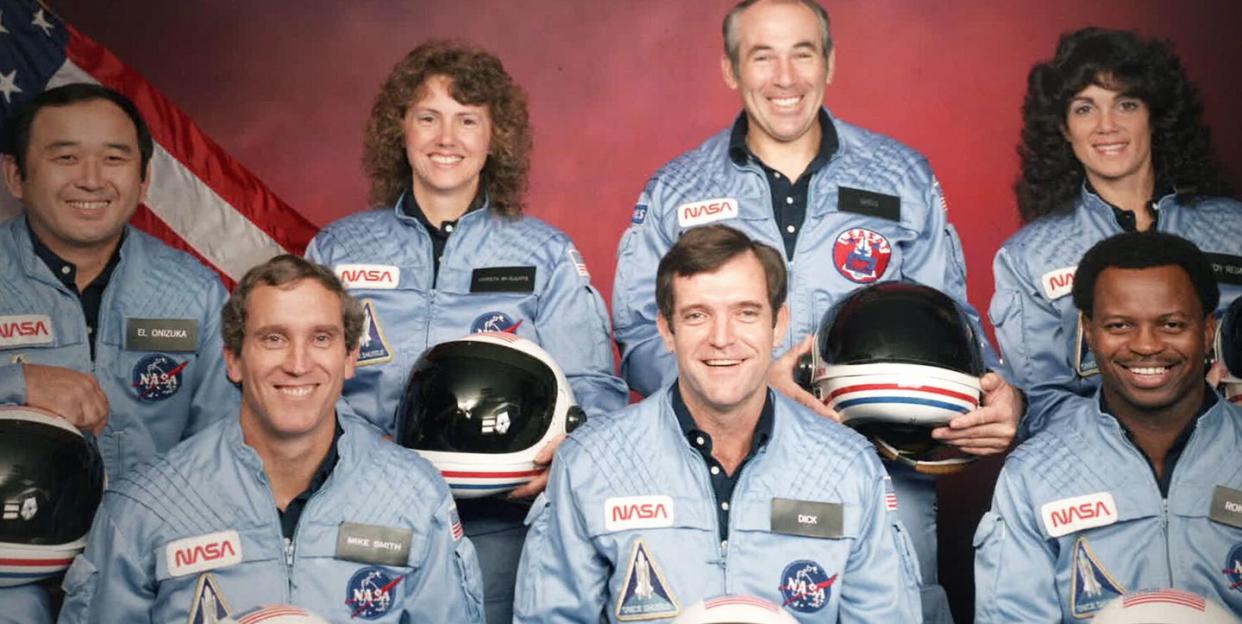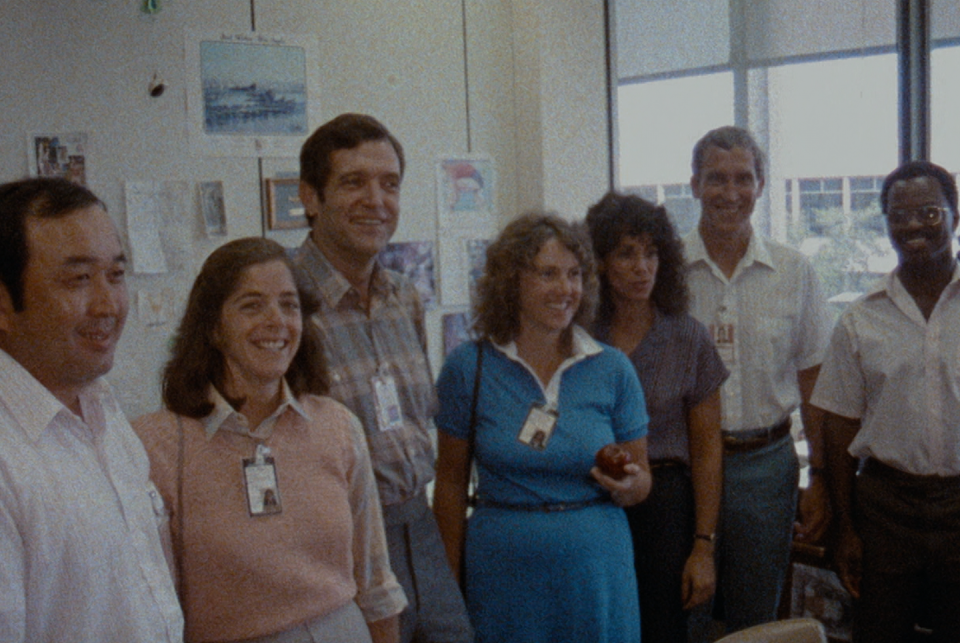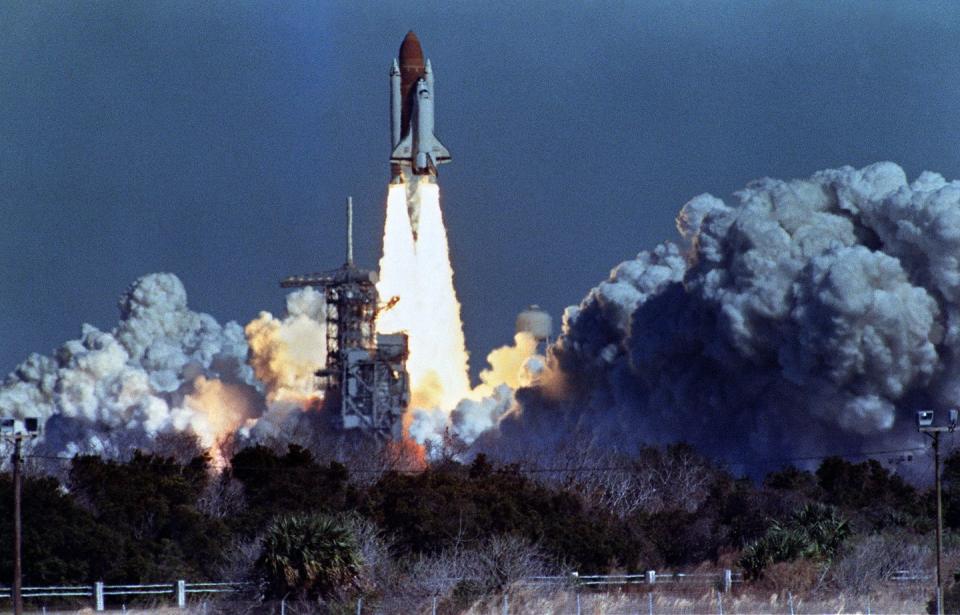A Tribute to the Seven Crew Members Tragically Killed Aboard the Challenger

On January 28, 1986, five astronauts and two payload specialists (which included one teacher) stepped onto the space shuttle Challenger at the Kennedy Space Center in Cape Canaveral, Florida. The mission was meant to be a routine event; the crew would help bring a series of satellites to space. No one expected seventy-three seconds after takeoff that the shuttle would not only explode, but kill all crew members aboard.
Challenger: The Final Flight, a new docuseries premiering on Netflix, explores the days leading up to the fateful flight. The show provides exclusive interviews from family members and archived training footage to reveal what happened in the days leading up to and after the tragedy.
Each person of the seven-person space crew came to the mission with his or her own project. From a young high school teacher from New Hampshire to one of the first women to ever join NASA, the members are remembered for their bravery and inspiring future astronauts. Here's a quick look at the seven-person crew who tragically died while aboard the Challenger:

Francis R. Scobee—Commander
Before he became the pilot of the mission, Scobee held a Bachelor of Science degree in Aerospace Engineering from the University of Arizona and served in the U.S. Air Force as a combat aviator during the Vietnam War. He joined NASA in January 1978, and by August 1979, had completed all his training. Before piloting Challenger, he also served as a flight instructor for NASA's 747 carrier aircraft.
Michael J. Smith—Pilot
As the pilot of the Challenger, Smith's voice was the last one to be heard on the spacecraft's recorder. He held a master's degree in aerospace Engineering and later served in the U.S. Navy, where he flew 28 different kinds of aircrafts for almost 5,000 hours during his tenure. Joining NASA in 1980, Smith was a commander for several programs, including Shuttle Avionics Integration Laboratory (SAIL) and the Flight Operations Directorate.
After his death, Congress posthumously gave him the rank of Captain. He also received a Chair in his honor at the Naval Postgraduate School in Monterey, California.
Ronald McNair—Mission Specialist
As one of the crew's mission specialists who also grew up at the height of the Civil Rights movement, McNair was involved in an incident where the local, segregated library in Lake City, South Carolina refused to let him, a young Black man, take out the books he needed for school in 1959. After the police and his mother showed up to try and solve the issue, the library eventually let him go check out his books, bringing slight change to his segregated hometown. (The library was later renamed to honor him after the Challenger explosion.)
After having received a Ph.D in Physics from MIT, McNair eventually joined NASA in 1978. He had previously flown aboard the Challenger for a mission in 1984, making him the second African-American to ever go to space. After his death, his hometown honored him by renaming the local park to the Ronald E. McNair Memorial Park.

Ellison Onizuka—Mission Specialist
Another mission specialist, Onizuka became the first Asian-American (and first person with Japanese ancestry) to go into space after being part of the crew for the space shuttle Discovery in 1985. After having received bachelor's and master's degrees in Aerospace Engineering, he joined the U.S. Air Force in 1970 and served as a flight test engineer and pilot at the McClellan Air Force Base in Sacramento, California.
Onizuka eventually joined NASA in 1978, where he joined SAIL and worked on various teams. Following the disaster, it was discovered that he and fellow mission specialist Judith Resnik were the only ones alive for a two-minute interval after the Challenger's cockpit split from the rest of the shuttle, after activating their emergency breathing apparatuses called Personal Egress Air Packs (PEAPS). He also was posthumously promoted to the rank of colonel in the Air Force.
Judith Resnik—Mission Specialist
The last of the three mission specialists, Resnik was first American Jew, the second woman nationally and fourth woman worldwide to ever fly into space. She was one of only sixteen women in the U.S. to ever attain a perfect SAT score at the time of her entering Carnegie Mellon University, where she attained a degree in Electrical Engineering. She later received a Ph.D in the same field from the University of Maryland.
Resnik was recruited to join NASA in 1978, where she was one of six women out of 8,000 people applying for the job. She eventually few on the first Discovery mission in 1984, where she held up a sign saying, "Hi Dad." While working at NASA, she worked on researching and developing novel operating softwares for the space agency's future missions.
Posthumously, Resnik was honored with a lunar crater and a dorm at Carnegie Mellon named after her. Her biggest legacy is the IEEE Judith A. Resnik Award, established in 1986, given yearly to an individual or team who brings outstanding contributions to space engineering.
Gregory Jarvis—Payload Specialist
As one of two payload specialist for the mission, Jarvis received a bachelor's degree in electrical engineering at SUNY Buffalo and a master in the same field from Northeastern University before joining the U.S. Air Force. After receiving a job at Hughes Aircraft, he was one of two candidates to work on the Space Shuttle Program at NASA in 1984.
After his death, he was honored with the renaming of the East Engineering building at SUNY Buffalo (Jarvis Hall) and his hometown school of Mohawk Central High School in Mohawk, NY (Gregory B. Jarvis Middle School). He also posthumously received the Congressional Space Medal of Honor in 2004.
Christa McAuliffe—Payload Specialist, Teacher
As the other payload specialist, McAuliffe was a social studies teacher at Concord High School in New Hampshire when she was selected from more than 11,000 applicants to join NASA's Teacher in Space Project in 1985. She received a bachelor's degree in history and education from Framingham State College in 1970 and eventually received her master's in education, supervision, and administration from Bowie University in 1978.
While in space, McAuliffe was planning lessons to teach her students from the shuttle. Among the lessons, she was slated to give a presentation about space travel titled "Where We've Been, Where We're Going, Why." After the explosion and her death, several honors were bestowed on her posthumously. She has two buildings in New England named after her (the McAuliffe-Shepard Discovery Center in Concord, NH and the Christa Corrigan McAuliffe Center for Education and Teaching Excellence at Framingham State University), along with forty schools across the country. In 2017, McAuliffe was inducted into the International Air & Space Hall of Fame at the San Diego Air and Space Museum.
You Might Also Like

